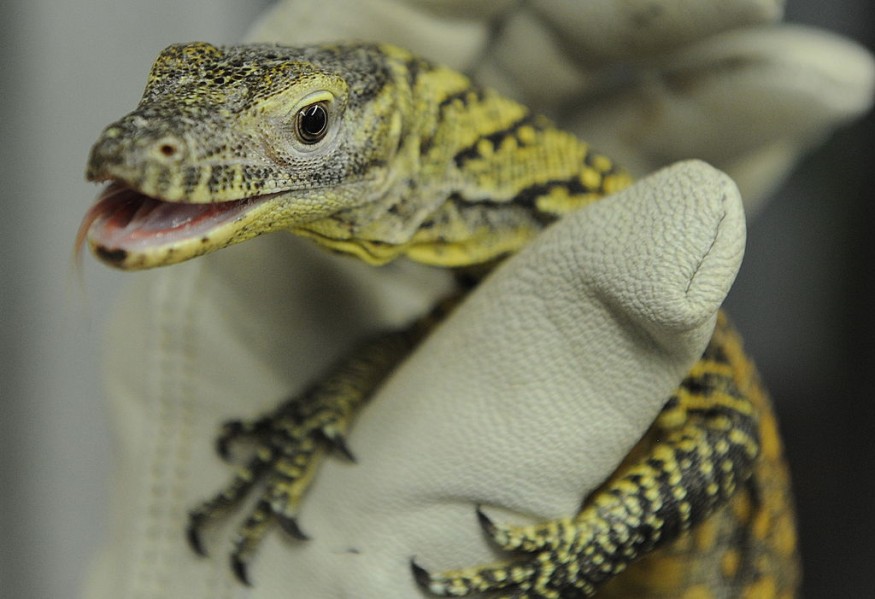
In Chester Zoo, an endangered Komodo dragon pair from Indonesia had a clutch of eggs that successfully hatched. The UK zoo rejoices in its success in breeding the species.
Successful Breeding Program at Chester Zoo
Two juvenile endangered Komodo dragons have joined a "vitally important" worldwide conservation breeding program after being hatched in a zoo.
The world's biggest lizard species' hatchlings will reach lengths of more than 9.8 feet.
For the first time, hatchlings from a couple of mating dragons were successfully produced in Chester Zoo.
Only 3,000 of the reptiles, according to scientists, are still present on a few tiny Indonesian islands where they are discovered.
The 40cm, 74g hatchlings were delivered to their parents, Mezcal and Satali.
The zoo authorities had been anxiously anticipating this occasion, according to lead reptile keeper Matt Cook, ever since they successfully introduced female Komodo dragon Mezcal and male Satali, and they appeared to click right away.
A clutch of eggs had been laid a month later, and the team discovered them. Zookeepers carefully placed the eggs in a special incubator, where they have been carefully watched for many months.
He said that the two young animals were doing well and would be a crucial part of a conservation breeding program.
Endangered Komodo Dragon from Indonesia
According to the zoo, the Komodo dragon is the biggest of the 7,555 lizard species that exist in the globe and has ancestors that go back over a hundred million years.
Cook noted that although the "fascinating creatures" have endured for tens of thousands of years, populations in the wild have been driven to the brink of extinction in the past fifty years as a result of increased activity from humans, habitat loss, and a fast-changing climate, BBC News reports.
According to the Chester Zoo, komodo dragons are enormous poisonous lizards. They are the biggest lizards on earth and one of the oldest as well.
The Komodo dragon is widely renowned for its poisonous bite, which it uses to inject venom into its target's bloodstream. This weakens the animal and keeps it from running away. The bacteria in their saliva additionally subject the bite wounds to possibly fatal infection.
These lizards have long, strong tails that assist them to swim well and fight well. They have thick, robust skin, long, sharp claws, and keen eyesight, all of which make them well-suited for hunting and combat.
Komodo dragons lay their eggs in September after mating between May and August. To avoid potential danger, young dragons devote a lot of time on trees. They reach adulthood in 8 to 9 years, and the average lifespan in the wild is 30 years, according to Chester Zoo.
Conservation Efforts
If not being hunted illegally, their number is declining just the same because of their small range. Since the 1970s, no Komodo dragons have been spotted on the island of Padar due to rampant deer hunting, the reptile's only food supply, according to Smithsonian's National Zoo & Conservation Biology Institute.
Related Article : Most Terrifying Apex Predators in the World That Dominate the Food Chain
© 2025 NatureWorldNews.com All rights reserved. Do not reproduce without permission.





